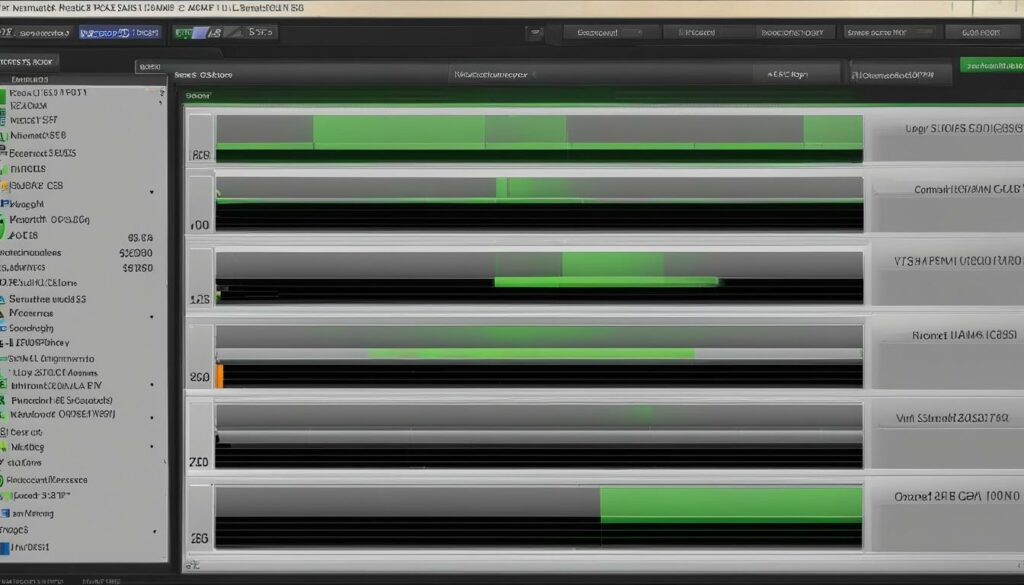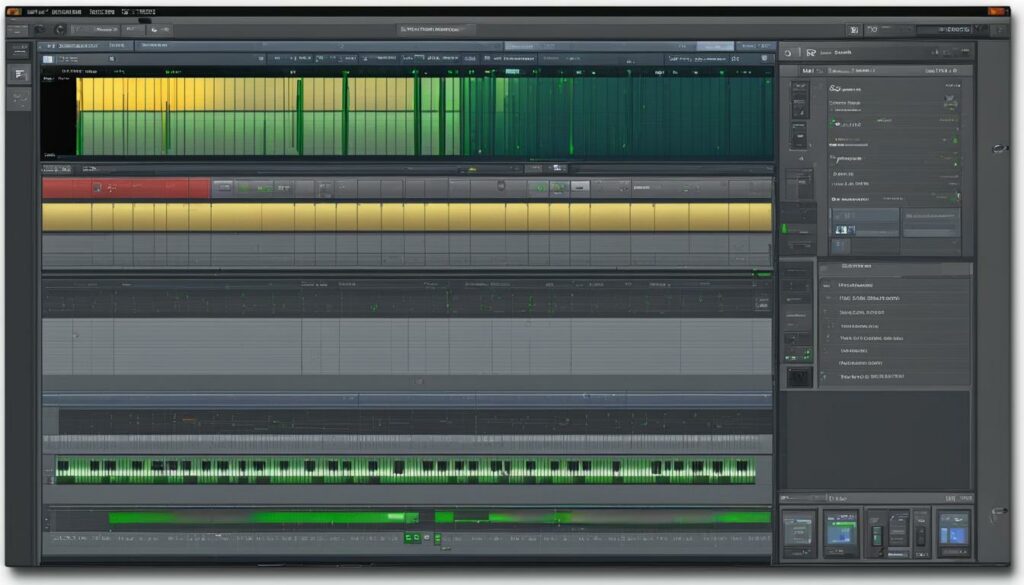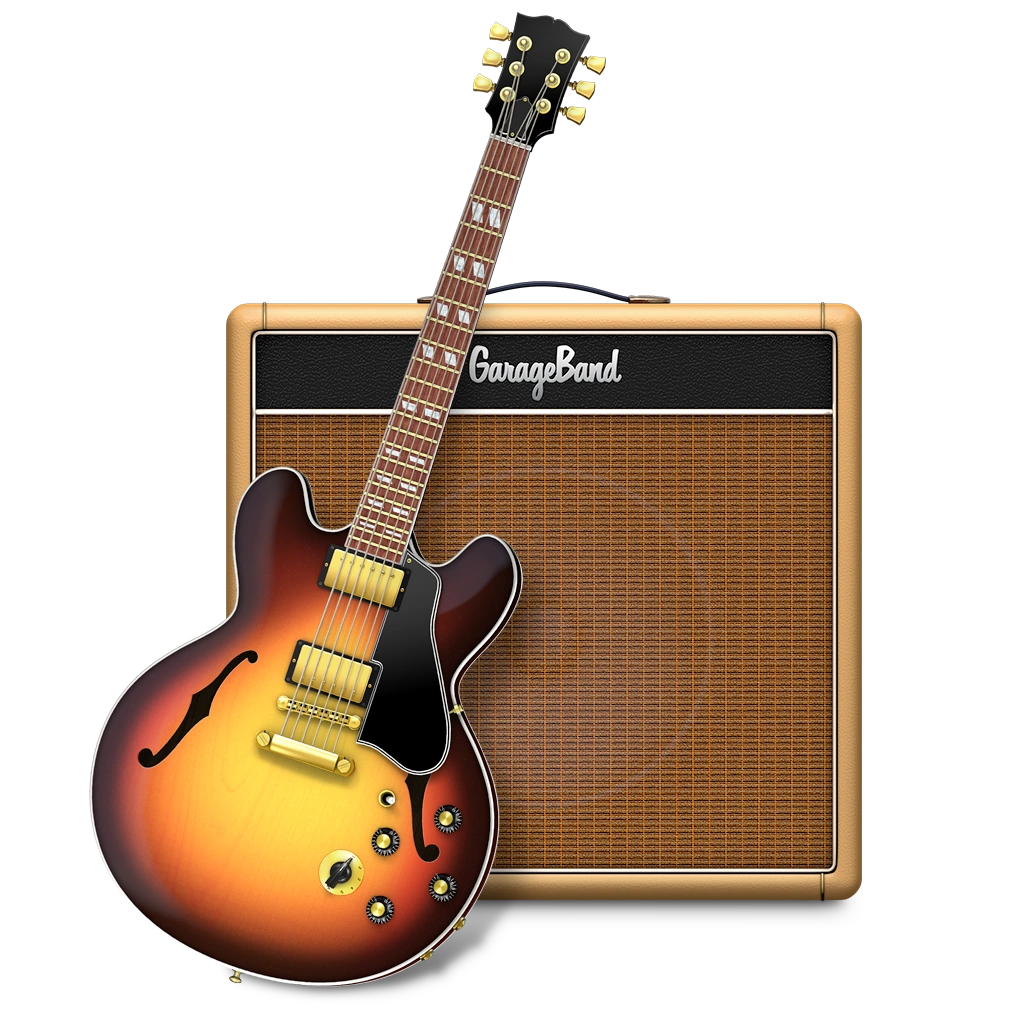Welcome to our comprehensive guide on LMMS, the leading cross-platform software for music production. In this article, we’ll explore the features, tutorials, and resources that make LMMS a top choice for artists and producers. Whether you’re a beginner exploring beat making or an experienced musician looking for advanced tools, LMMS has something for everyone.
Official GarageBand For Windows PC: A Popular Alternative to LMMS
While LMMS is a cross-platform software, some Windows PC users may be looking for an alternative that specifically caters to their operating system. One highly popular option is GarageBand, a music production software originally designed for macOS and iOS. However, it’s important to note that there is no official version of GarageBand available for Windows PCs.
For Windows users who still want to explore a music production software similar to GarageBand, there are alternative options available. We recommend considering LMMS, a powerful cross-platform software that offers similar features and functionalities.
LMMS, also known as Linux MultiMedia Studio, provides Windows users with a convenient and accessible solution for music production. With its intuitive interface and comprehensive toolset, LMMS enables users to compose music, create beats, synthesize sounds, and manipulate audio effects.
Unlock Your Creative Potential with LMMS
Although GarageBand might not be officially supported on Windows, LMMS offers a range of features and capabilities that are suitable for both beginners and advanced users. With LMMS, you can unleash your creativity and bring your musical ideas to life, without any platform limitations.
Ready to dive into the world of music production on your Windows PC? Discover the power of LMMS and let your creativity soar.
Free and Safe Official Download from Our Resource Homepage
Looking to get started with LMMS? You can download the software for free from our official LMMS website. Our resource homepage provides a safe and secure download link, ensuring that you can obtain the software without any concerns. Experience the power of LMMS with just a few simple steps.
By visiting our resource homepage, you will have access to the latest version of LMMS. We regularly update our software to provide users with the best experience possible. Once you’ve downloaded LMMS, you can begin exploring the various features and capabilities it offers for music production.
With LMMS, you have the freedom to unleash your creativity and create professional-quality music on your preferred operating system. Whether you’re running Windows, macOS, or Linux, our software is designed to deliver exceptional performance and user-friendly interface. Embrace the power of LMMS and start producing music that truly represents your artistic vision.
GarageBand For Windows Without Emulators: Simplicity at Your Fingertips
For Windows users who are searching for a GarageBand alternative without the need for emulators, look no further than LMMS. With LMMS, you can enjoy the convenience of a standalone application that runs smoothly on your Windows PC, offering a user-friendly experience for music production.
LMMS eliminates the hassle of dealing with emulators, making it easy for Windows users to dive straight into creating music. Whether you’re a beginner or an experienced producer, LMMS provides a straightforward solution that allows you to unleash your creativity and produce high-quality tracks.
With its intuitive interface and extensive features, LMMS offers a seamless music production experience on Windows. You can take advantage of the song editor, pattern editor, piano roll, and FX mixer to craft your unique sound. Plus, LMMS supports various plugins, including synthesizers and audio processors, allowing you to expand your sound palette and experiment with different tones and effects.
Whether you’re a Windows user seeking an alternative to GarageBand or simply looking for a powerful music production tool, LMMS is the answer. Say goodbye to the complexities of emulators and embrace the simplicity of LMMS for all your music production needs. Start creating your next masterpiece today!
LMMS System Requirements: Ensuring Smooth Performance
Before diving into the world of music production with LMMS, it’s crucial to ensure that your system meets the minimum requirements for optimal performance. By having the right specifications, you can maximize your experience and creativity with this powerful software.
Minimum Specifications for Smooth Performance
LMMS recommends a minimum of a 1 GHz CPU, 512 MB of RAM, and a two-channel sound card to run the software smoothly. These requirements are relatively modest and should be achievable on most modern Windows PCs. However, keep in mind that the performance of LMMS may vary depending on the complexity of your music projects and the overall performance of your system.
To enjoy a seamless experience and avoid potential lags or crashes, we recommend ensuring that your system meets or exceeds the minimum specifications. This will ensure that you can fully unleash your creativity and take advantage of all the features and tools that LMMS has to offer.
Remember, the better your system is equipped, the more efficiently you can work on your music projects. So, whether you’re a beginner or an experienced producer, make sure to check your system’s specifications before getting started with LMMS.

Key Features of LMMS: Unleash Your Creativity
LMMS offers a range of features and tools that empower musicians and producers to unleash their creativity in music production. One of the key features of LMMS is the Song Editor, which allows users to compose and arrange their songs with ease. Whether you’re creating a catchy melody or crafting intricate harmonies, the Song Editor provides a flexible and intuitive platform to bring your musical ideas to life.
Additionally, LMMS offers a Pattern Editor, which is perfect for beat making and creating rhythmic patterns. With a wide variety of instruments and samples at your disposal, you can experiment with different beats and grooves to find the perfect sound for your tracks. The Pattern Editor’s user-friendly interface makes it easy to layer multiple patterns and create complex rhythms.
To further enhance your music production, LMMS provides a Piano Roll, which allows you to edit and fine-tune your patterns and melodies. You can adjust the note length, velocity, and pitch to achieve the desired sound. The Piano Roll also supports MIDI input, enabling you to record your performances or play your MIDI keyboard directly into LMMS.
LMMS also offers an FX Mixer, which allows you to add audio effects and manipulate your sounds. Whether you want to create a lush reverb, add some distortion, or apply a filter, the FX Mixer provides a range of options to shape and transform your audio. With the ability to automate these effects, you can create dynamic and evolving sounds in your music.
LMMS Plugins: Expand Your Sound Palette
In addition to its built-in features, LMMS supports various plugins that allow you to expand your sound palette. These plugins include synthesizers, samplers, and effects that can add unique textures and tones to your music. With a wide range of plugins to choose from, you can experiment with different sounds and create truly original compositions.
Some notable plugins for LMMS include BitInvader, which offers wavetable-lookup synthesis, and FreeBoy, which emulates the audio of the Game Boy. These plugins, along with others like Kicker for bass drum synthesis and OpulenZ for FM synthesis, provide endless possibilities for sound design and experimentation.
Whether you’re a beginner or an experienced producer, LMMS and its extensive range of features and plugins offer a powerful platform for music production. From composing songs and creating beats to editing patterns and adding audio effects, LMMS gives you the tools you need to bring your musical vision to life.
LMMS Tutorial: A Beginner’s Guide to Getting Started
If you’re new to LMMS, don’t worry—we’re here to help you get started on your music production journey. In this beginner’s guide, we’ll walk you through the essential steps and features of LMMS, so you can start creating your own music with confidence.
First, let’s familiarize ourselves with LMMS’s interface. The main workspace consists of multiple editors, such as the Song Editor, Pattern Editor, and Piano Roll. Each editor serves a specific purpose in the music creation process, allowing you to arrange your songs, create beats and melodies, and fine-tune your compositions.

Now that you have a basic understanding of the interface, let’s dive into creating your first project. You can start by selecting a project template or creating a new project from scratch. LMMS provides a wide range of instrument presets, samples, and loops that you can use to kickstart your creativity. You can also import your own audio files to personalize your compositions.
Exploring LMMS’s Key Features
As you continue your LMMS journey, you’ll discover a wealth of features and tools at your disposal. LMMS offers a variety of plugins, including synthesizers, effects, and samplers, allowing you to experiment with different sounds and textures. Additionally, you can utilize automation to add movement and dynamics to your tracks, and take advantage of the mixer to fine-tune your audio levels.
LMMS also supports MIDI input, which means you can connect your MIDI keyboard or controller to create melodies and control virtual instruments. And if you ever get stuck, don’t forget to check out the extensive tutorials and documentation available on the official LMMS website. They provide step-by-step instructions and helpful tips to guide you along your music production journey.
LMMS Plugins: Expand Your Sound Palette
One of the key advantages of using LMMS for music production is its extensive collection of plugins, which allow you to expand and enhance your sound palette. Whether you’re looking for synthesizers, samplers, or audio effects, LMMS has you covered. These plugins provide a wide variety of sounds and instruments, giving you the flexibility to experiment and create unique compositions.
LMMS offers a range of synthesizer plugins, such as BitInvader for wavetable-lookup synthesis, OpulenZ for FM synthesis, and FreeBoy for Game Boy audio emulation. These plugins allow you to craft a diverse range of sounds, from modern electronic beats to nostalgic chiptune melodies.
In addition to synthesizers, LMMS also offers audio plugins like Kicker for bass drum synthesis and Sf2 Player for Soundfont playback. These plugins help you add depth and texture to your tracks, allowing you to create dynamic and engaging music.
LMMS: Exporting and Saving Projects
When using LMMS for your music production projects, it’s essential to know how to export and save your work. LMMS offers users the flexibility to export their projects in various file formats, including Ogg, FLAC, MP3, and WAV. This allows you to share your music with others or use it in other digital audio workstations. Simply choose the desired format when exporting your project, and LMMS will generate the corresponding file.
When it comes to saving your projects within LMMS, you have two options: the compressed MMPZ format and the uncompressed MMP format. The compressed MMPZ format is ideal for saving space on your computer while maintaining all the project data. On the other hand, the uncompressed MMP format provides easy access to the project files for those who prefer to work with individual components. Whichever format you choose, LMMS ensures your project is saved accurately and efficiently.
Managing and organizing your music projects is made simple with LMMS. The ability to export and save projects in different file formats and formats gives you the freedom to collaborate, share your work, and preserve your creative efforts. Whether you’re a beginner just starting with LMMS or an experienced producer, LMMS provides the necessary tools to help you create and save your music projects effortlessly.
LMMS: Supporting Standards in Music Production
LMMS is a versatile music production software that supports various industry standards, making it a powerful tool for musicians and producers. One of the key standards supported by LMMS is MIDI, which allows users to integrate external MIDI devices and control different instruments and effects within the software. With MIDI support, users can easily create and edit melodies, chords, and other musical elements, providing endless possibilities for creativity.
Another important standard supported by LMMS is Virtual Studio Technology (VST). VST plugins can be used to enhance the capabilities of LMMS, providing access to a wide range of instruments, effects, and sound processing tools. With VST support, users can explore an extensive library of plugins and take their music production to new heights.
Additionally, LMMS supports the Linux Audio Developer’s Simple Plugin API (LADSPA) standard, which allows users to access a variety of audio plugins for different tasks like filtering, equalization, and modulation. This expands the range of available sound processing options and gives users more flexibility in shaping their music.
Expanding Sound Possibilities
By supporting standards such as SoundFont (SF2) and Gravis Ultrasound (GUS) patches, LMMS offers users the ability to work with a wide variety of instrument sounds and textures. SoundFont files, in particular, provide a convenient way to incorporate realistic instrument samples into music projects, enabling users to create professional-sounding compositions.
With its support for a range of industry standards, LMMS empowers musicians and producers to explore their creativity and achieve professional-level results. Whether it’s through MIDI integration, VST plugins, or the use of various sound libraries, LMMS provides a comprehensive environment for music production.
Conclusion: LMMS as a Powerful Music Production Tool
We have explored the vast capabilities of LMMS as a top-tier cross-platform software for music production. With its user-friendly interface, extensive features, and support for various plugins, LMMS proves to be a valuable asset for both beginners and professional musicians.
Whether you’re a Windows user seeking an alternative to GarageBand or an experienced producer looking for a versatile workstation, LMMS offers endless possibilities for creating and mixing music. Its compatibility with multiple operating systems makes it accessible to a wide range of users.
With LMMS, you can dive into the world of music production and explore your creativity. The software provides advanced tools such as the Song Editor, Pattern Editor, Piano Roll, and FX Mixer, allowing you to compose songs, create beats, edit melodies, and add audio effects with ease.
In conclusion, LMMS stands as a powerful music production tool that empowers musicians and producers to unleash their creativity. Its open-source nature, modern interface, and support for industry standards make it a compelling choice for anyone looking to venture into the world of music production and signal processing.
FAQ
Is LMMS available for Windows?
Yes, LMMS is available for Windows, along with macOS and Linux.
How can I download LMMS?
You can download LMMS for free from the official LMMS website (lmms.io).
What are the system requirements for LMMS?
LMMS requires a 1 GHz CPU, 512 MB of RAM, and a two-channel sound card.
What are the key features of LMMS?
LMMS offers a Song Editor, Pattern Editor, Piano Roll, and FX Mixer, among other features.
Is there a beginner’s guide for LMMS?
Yes, LMMS provides tutorials and documentation on their official website to help beginners get started.
Are there plugins available for LMMS?
Yes, LMMS supports various plugins, including synthesizers, samplers, and effects.
Can I export and save projects in LMMS?
Yes, LMMS allows you to export your projects in formats like Ogg, FLAC, MP3, and WAV, and provides two file format options for saving projects.
Does LMMS support industry standards in music production?
Yes, LMMS supports standards like MIDI, SoundFont, VST, LADSPA, and GUS patches.
Is LMMS a powerful music production tool?
Yes, LMMS offers a powerful set of features and tools for music production, suitable for both beginners and professionals.


